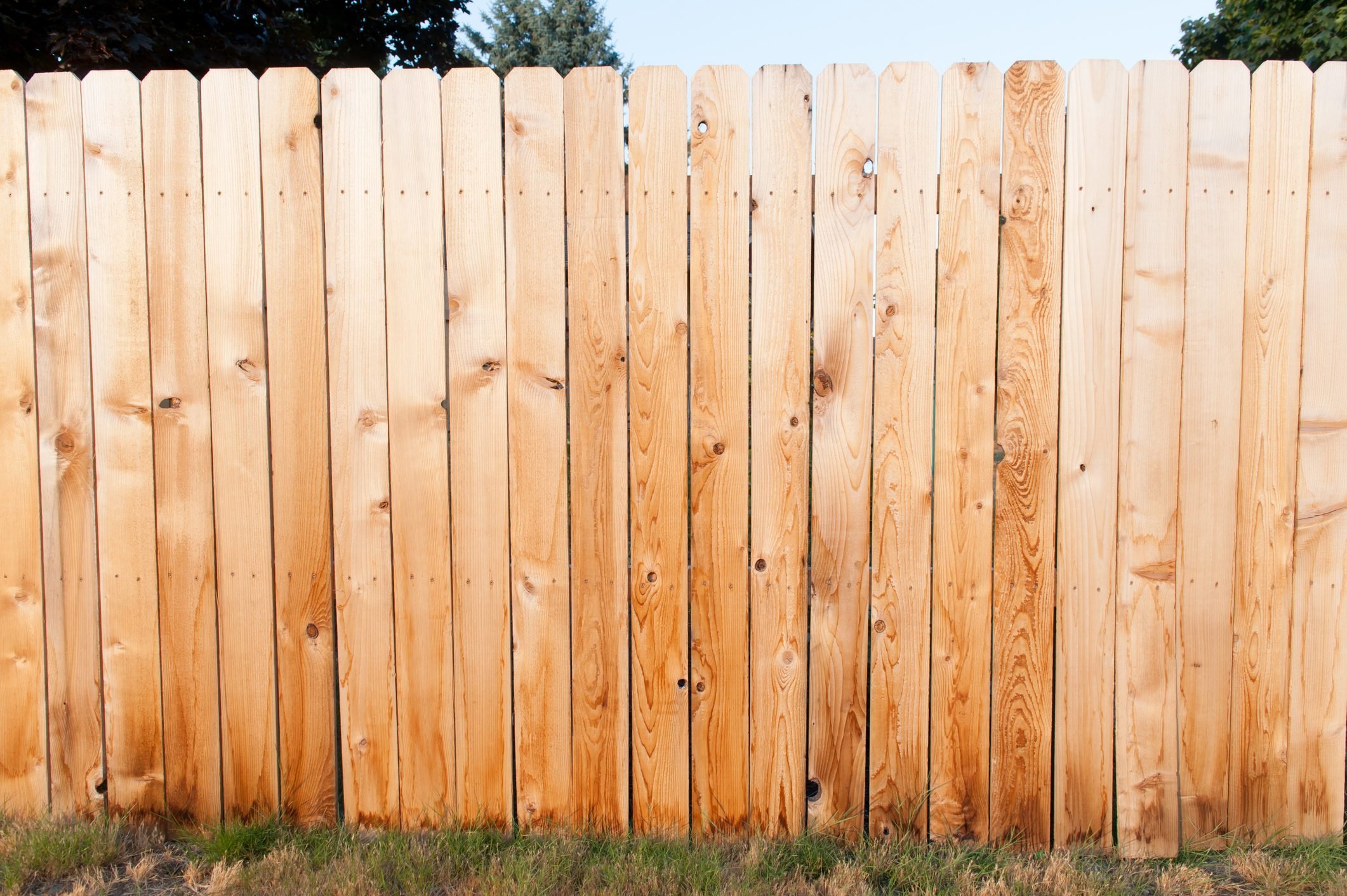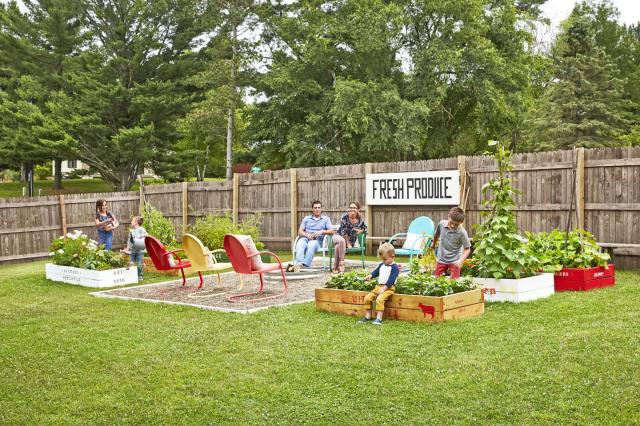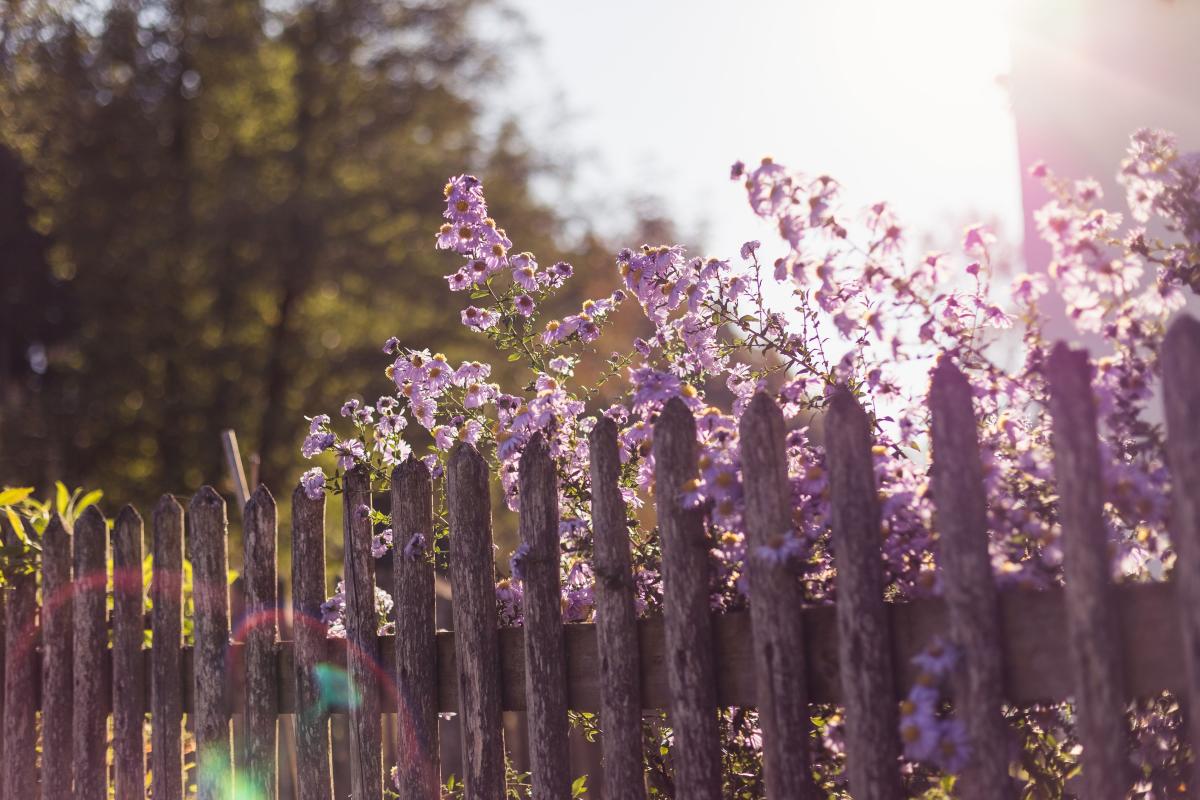Wooden Fences: A Classic Choice for Traditional Charm
If you’re looking for information about fences and want to explore the various types, sizes, shapes, and materials, then you’re in the right place! My blog, “fencedude.com,” is dedicated to providing comprehensive and engaging content about fences. In this article, we will delve into the intricacies of different fence types and their characteristics. We’ll also discuss the suitability of wooden fences for different needs and requirements. Wooden fences have a timeless appeal and can add a touch of traditional charm to any property. Stay tuned to learn more about their advantages and considerations!
In this article, we will cover the benefits and considerations of wooden fences, including their durability, maintenance requirements, and aesthetic appeal. We will also explore which specific needs they are best suited for, such as enhancing privacy, ensuring security, enclosing a backyard, or adding decorative elements. If you’re interested in learning about the importance of choosing the appropriate size and shape of a fence based on your specific requirements, we’ve got you covered too. So, if you’re ready to discover everything there is to know about wooden fences, keep reading!
Wooden Fences: A Classic Choice for Traditional Charm
Wooden fences have long been a popular choice for homeowners and property owners looking to add charm and character to their outdoor spaces. With their timeless appeal, natural beauty, and versatility, wooden fences offer a range of benefits that make them an excellent option for various purposes. In this article, we will explore the different types of wooden fences, their benefits, considerations for choosing the right one, and tips for maintaining them. Whether you’re looking to enhance privacy, add aesthetic appeal, or enclose your backyard, wooden fences are sure to meet your needs.
Types of Wooden Fences
Traditional Picket Fence
The traditional picket fence is a classic design that features vertical wooden boards or pickets attached to horizontal rails. This type of fence is known for its charming and inviting appearance, making it a popular choice for front yards and gardens. It adds a touch of nostalgia and highlights the beauty of the surrounding landscape.
Board-on-Board Fence
A board-on-board fence consists of vertical wooden boards that overlap with small gaps between them. This design offers enhanced privacy while still allowing air and light to pass through. It is an excellent choice for properties that require a higher level of enclosure and security.
Split Rail Fence
Split rail fences are characterized by their rustic and casual appearance. They are made of wooden posts and rails that are either stacked or crossed to create a simple yet sturdy structure. Split rail fences are commonly used in rural and ranch-style properties, providing a subtle and natural boundary without blocking the view.
Privacy Fence
Privacy fences are specifically designed to offer maximum privacy and security. They typically feature tightly spaced wooden boards or panels that completely block the view from the outside. Privacy fences are ideal for homeowners who value their privacy or want to create a secluded outdoor living space.
Benefits of Wooden Fences
Enhanced Privacy
One of the most significant advantages of wooden fences is their ability to provide privacy. Whether you choose a traditional picket fence or a privacy fence, wooden fences act as a physical barrier, preventing outsiders from peering into your property. This is especially important for homeowners who have young children or pets and want to ensure their safety.
Aesthetic Appeal
Wooden fences have a timeless and natural beauty that enhances the overall appearance of a property. They add warmth, character, and charm, making them an excellent choice for both traditional and modern homes. Wooden fences can be stained or painted in various colors to match the architectural style or personal preference, allowing homeowners to create a cohesive and personalized outdoor space.
Natural and Eco-friendly
Wooden fences are a sustainable and eco-friendly option compared to their counterparts made from synthetic materials. Wood is a renewable resource, and when sourced responsibly, it can have a minimal impact on the environment. Additionally, wooden fences can be recycled or repurposed at the end of their lifespan.
Versatility
Wooden fences offer great versatility in terms of design options and customization. They can be built in various heights and shapes to suit specific needs and preferences. Whether you prefer a straight board fence, a scalloped fence, or a convex fence, wooden fences can be tailored to complement the architectural style of your property. The natural beauty of wood also allows for easy integration of decorative elements such as lattice panels or post caps.
Considerations for Choosing Wooden Fences
Budget and Cost
Before choosing a wooden fence, it’s essential to consider your budget and the overall cost of the fence. Wooden fences can vary significantly in price, depending on factors such as the type of wood used, the fence’s size and design, and the complexity of the installation. It’s crucial to set a realistic budget and determine how much you are willing to invest in a wooden fence.
Maintenance Requirements
Wooden fences require regular maintenance to ensure their longevity and durability. Factors such as the wood species, climate, and exposure to the elements can affect the maintenance needs of a wooden fence. Regular cleaning, staining, and sealing are necessary to protect the wood from moisture, rot, and UV damage. It’s important to be aware of the maintenance requirements and factor them into your decision-making process.
Durability
The durability of a wooden fence depends on the type of wood used and the quality of construction. Certain wood species, such as cedar and redwood, are naturally more resistant to rot and decay. Pressure-treated wood is another durable option that has been chemically treated to resist insect damage and decay. Consider the durability of the wood and ensure that it can withstand the local weather conditions and other environmental factors.
Local Regulations
Before installing a wooden fence, it’s crucial to check and comply with local regulations and zoning laws. Some areas have specific rules regarding fence height, location, and materials. It’s important to obtain the necessary permits and permissions to avoid any legal issues or fines. Consulting with a professional or contacting your local building department can help you navigate through the regulations.
Determining the Size of a Wooden Fence
Property Size and Dimensions
When determining the size of a wooden fence, the first consideration should be the property size and dimensions. Take accurate measurements of the area where the fence will be installed to determine how many linear feet of fencing materials you will need. Consider any slopes or uneven terrain that may require adjustments to the fence design.
Level of Enclosure Needed
The level of enclosure needed will also influence the size and height of the wooden fence. If privacy is a primary concern, a taller fence may be required. For properties with a lower level of enclosure needed, a shorter fence may be sufficient. Assess your privacy needs and the purpose of the fence to determine the appropriate height and level of enclosure.
Architectural Integration
The size of the wooden fence should also complement the architectural style of your property. Consider the scale and proportion of the fence in relation to the surrounding structures. A fence that is too small or too large can appear out of place and detract from the overall aesthetic appeal. Strive for a harmonious integration of the fence with the existing architecture.
Shapes of Wooden Fences
Straight Board Fence
A straight board fence is a popular choice for traditional and contemporary properties. It features vertical wooden boards that are evenly spaced and attached to horizontal rails. This type of fence offers a clean and uniform appearance, enhancing the overall aesthetic appeal of the property.
Scalloped Fence
A scalloped fence is characterized by its curved or scalloped top edge. This design adds an elegant and decorative touch to the fence, making it suitable for properties with a more ornamental style. Scalloped fences can be customized with different curve patterns, allowing homeowners to add a unique and personal touch to their outdoor space.
Convex Fence
A convex fence features a curving top edge that gently angles outward. This design creates a visually appealing and flowing effect, adding a sense of movement and softness to the fence line. Convex fences are a popular choice for properties with a more organic or natural aesthetic.
Materials Used in Wooden Fences
Cedar
Cedar is a popular choice for wooden fences due to its natural insect and rot resistance. It has a distinct fragrance and a warm reddish-brown color that adds to its visual appeal. Cedar is known for its durability and stability, making it suitable for various weather conditions. It is considered a premium wood option, and though it may be more expensive, it offers excellent value in terms of longevity and aesthetics.
Redwood
Redwood is another premium wood choice for wooden fences. It is known for its rich reddish-brown color, straight grain, and resistance to decay and insects. Redwood has a natural beauty that enhances the overall appearance of a property. It is a durable and long-lasting wood option, making it an excellent investment for homeowners looking for a high-quality fence.
Pressure-treated Wood
Pressure-treated wood is a popular option for wooden fences due to its durability and affordability. It is made by treating the wood with chemicals to protect it from rot, decay, and termite damage. Pressure-treated wood is widely available and can be easily customized to suit different fence designs. However, it is important to note that the chemicals used in the treatment process may require homeowners to take certain precautions, such as wearing gloves and avoiding contact with skin.

Suitability of Wooden Fences for Specific Purposes
Enhancing Privacy
Wooden fences, particularly privacy fences, are highly suitable for enhancing privacy. With their solid boards or panels, they create a physical barrier that prevents outsiders from seeing into your property. This is especially important for homeowners who live in close proximity to neighbors or busy streets. Wooden fences offer a sense of seclusion and tranquility, allowing you to enjoy your outdoor space without prying eyes.
Ensuring Security
Wooden fences, when properly constructed and maintained, can provide a level of security to your property. The sturdy construction and height of a wooden fence act as a deterrent to intruders, making it more difficult for them to access your property. Additionally, wooden fences with a lockable gate provide an additional layer of security, preventing unauthorized individuals from entering your property.
Enclosing Backyards
Wooden fences are an excellent choice for enclosing backyard spaces. They create a clear boundary between your property and the surrounding area, defining your outdoor space and providing a sense of ownership. Whether you need a fence to keep children and pets safely contained or to create a dedicated space for gardening and outdoor activities, a wooden fence is a versatile option that can be tailored to your specific needs.
Adding Decorative Elements
Wooden fences can also serve as an opportunity to add decorative elements to your outdoor space. Lattice panels, post caps, finials, and carved designs are just a few examples of decorative enhancements that can be incorporated into the fence design. These elements can add a touch of personality and uniqueness to your property, making it stand out from the rest.
Maintaining Wooden Fences
Regular Cleaning and Inspection
Regular cleaning is essential to maintain the appearance and durability of a wooden fence. Remove any debris, dirt, or mildew using a mild detergent, water, and a soft brush. Inspect the fence for signs of damage, such as loose or rotten boards, and repair them promptly to prevent further deterioration.
Staining and Sealing
Staining and sealing a wooden fence can significantly extend its lifespan and protect it from the elements. Apply a high-quality stain or sealant to the wood surface using a brush or sprayer. This will help prevent moisture penetration, UV damage, and wood rot. Follow the manufacturer’s instructions for proper application and reapplication of the stain or sealant.
Repairing Damaged Sections
Over time, wooden fences may experience wear and tear, especially in areas with extreme weather conditions. Regularly inspect the fence for loose boards, nails, or other signs of damage. Replace any rotten or broken boards and secure loose nails or screws. Timely repairs will help maintain the fence’s integrity and ensure its longevity.
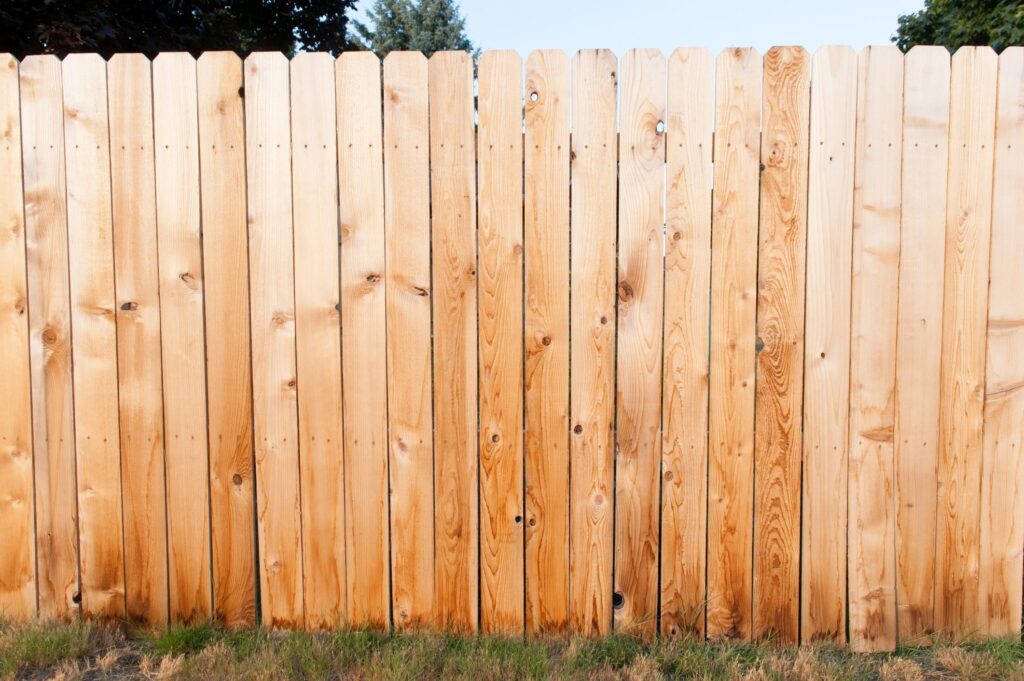
Addressing Common Concerns About Wooden Fences
Termite Infestation
Wooden fences can be susceptible to termite infestation, which can weaken the structure and compromise its durability. To prevent termite infestation, consider using pressure-treated wood or other naturally insect-resistant wood species. Regular inspections and timely treatment of any termite-related issues can help protect the fence from damage.
Weathering and Aging
Wooden fences are exposed to the elements, which can cause weathering and aging over time. Sun exposure, moisture, and temperature changes can lead to fading, warping, and splitting of the wood. Proper maintenance, including sealing and staining, can help minimize these effects and preserve the fence’s appearance and structural integrity.
Wood Rot
Wood rot is another common concern for wooden fences, especially in areas with high humidity or frequent rainfall. Rot can weaken the wood and compromise the stability of the fence. Regular inspections, prompt repairs, and proper drainage around the fence can help prevent wood rot. Using rot-resistant wood species, such as cedar or redwood, can also reduce the risk of wood rot.
Comparing Wooden Fences with Other Fence Types
Wooden Fences vs. Chain-link Fences
Wooden fences offer enhanced privacy and aesthetics compared to chain-link fences. While chain-link fences are durable and low-maintenance, they lack the natural beauty and charm of wooden fences. Wooden fences are also more customizable in terms of design options and can be tailored to fit specific architectural styles.
Wooden Fences vs. Vinyl Fences
Vinyl fences are a low-maintenance alternative to wooden fences. They do not require staining, painting, or sealing, making them an attractive option for homeowners who prefer a hands-off approach to fence maintenance. However, wooden fences offer a more natural and traditional look, with the ability to be customized and stained in various colors.
Wooden Fences vs. Metal Fences
Metal fences, such as wrought iron or aluminum, offer strength and durability. They can withstand harsh weather conditions and require minimal maintenance. However, wooden fences have a warm and inviting appearance that complements a wide range of architectural styles. Wooden fences also offer more versatility in terms of customization and design possibilities.
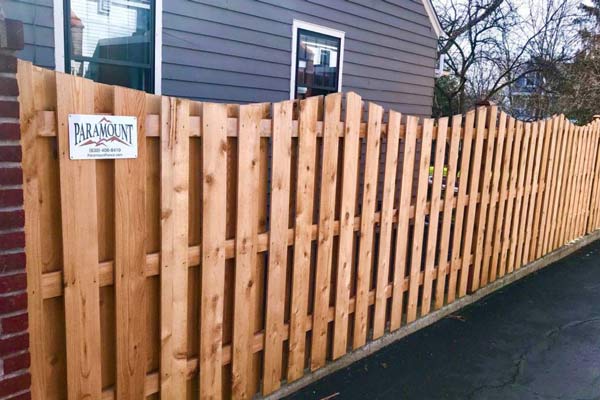
Factors to Consider when Installing Wooden Fences
Property Boundaries and Surveying
Before installing a wooden fence, it’s essential to accurately determine the property boundaries. Engaging a professional surveyor can help ensure that the fence is installed within your property and does not encroach on neighboring properties. This will help prevent any future conflicts or legal issues.
Permits and Permissions
Different areas may have specific regulations and permits required for fence installation. Check with your local authorities to determine if there are any permits or permissions needed. This will help avoid potential fines or the need for costly fence modifications down the line.
Professional Installation vs. DIY
The decision to hire a professional or undertake a DIY installation depends on your level of expertise, time availability, and the complexity of the fence design. While DIY installation can save money, professional installation ensures proper construction, avoids potential issues, and guarantees a higher level of durability and longevity for the fence.
Common Mistakes to Avoid when Choosing Wooden Fences
Ignoring Local Regulations
It is essential to research and comply with local regulations and zoning laws before installing a wooden fence. Ignoring or neglecting these regulations can lead to costly fines, legal issues, or the requirement to remove and rebuild the fence. Taking the time to understand the rules and obtaining the necessary permits will save you hassle in the long run.
Underestimating Maintenance Requirements
Wooden fences require regular maintenance to keep them in good condition. Underestimating the maintenance requirements can result in premature deterioration, costly repairs, or even the need for replacement. Make sure you are aware of the necessary cleaning, staining, and sealing routines to maintain the fence’s appearance and durability.
Not Considering Long-term Durability
When choosing a wooden fence, it’s important to consider the long-term durability of the selected wood species and construction. Some wood species, such as cedar and redwood, are naturally more resistant to rot and decay. Additionally, investing in high-quality construction methods, such as using stainless steel or galvanized nails, can contribute to the overall durability of the fence.
Enhancing the Lifespan of Wooden Fences
Proper Drainage and Moisture Control
Proper drainage is crucial for wooden fences to prevent water accumulation, which can lead to wood rot and decay. Ensure the fence posts are properly installed with gravel or concrete at the base to facilitate water runoff. Regularly inspect the fence for any drainage issues and address them promptly.
Trimming Vegetation Around the Fence
Vegetation and overgrown plants can have a negative impact on the lifespan of a wooden fence. Trim any plants that are in direct contact with the fence to prevent moisture accumulation and potential damage. This will also help improve air circulation around the fence, reducing the risk of wood rot.
Avoiding Contact with Soil
Direct contact with the soil can accelerate the deterioration of a wooden fence. As much as possible, avoid burying the fence posts directly into the ground. Instead, use concrete or gravel to provide a solid and stable foundation. This will help prevent soil moisture from seeping into the wood, leading to rot and decay.
Conclusion
Wooden fences have been a classic choice for homeowners looking to add traditional charm and character to their properties. With a wide range of types, shapes, and designs available, wooden fences offer versatility and customization options to suit varying needs and preferences. Whether you’re looking to enhance privacy, add aesthetic appeal, or enclose your backyard, wooden fences provide a timeless and natural beauty that is sure to make a statement. By considering factors such as budget, maintenance requirements, and local regulations, you can choose a wooden fence that meets your specific needs while providing long-lasting durability and functionality.
Common Questions about Wooden Fences
-
How long does a wooden fence typically last?
- The lifespan of a wooden fence can vary depending on factors such as wood species, maintenance, and local conditions. On average, a well-maintained wooden fence can last between 20 to 30 years or more.
-
What is the best type of wood for a wooden fence?
- Cedar and redwood are popular choices for wooden fences due to their natural resistance to rot and decay. Pressure-treated wood is also a durable option that offers insect and moisture resistance.
-
Do wooden fences require a lot of maintenance?
- Wooden fences do require regular maintenance to ensure their longevity. This includes cleaning, staining, sealing, and repairing any damaged sections.
-
Can I install a wooden fence myself?
- The installation of a wooden fence can be a DIY project, depending on your level of expertise and the complexity of the fence design. However, hiring a professional ensures proper construction and saves you time and potential issues.
-
Can a wooden fence enhance the value of my property?
- A well-maintained and aesthetically pleasing wooden fence can enhance the curb appeal of your property, potentially increasing its value. A wooden fence can also be a desirable feature for prospective buyers.
-
Can I customize the design of a wooden fence?
- Yes, wooden fences offer great versatility in terms of design and customization options. They can be built in various heights, shapes, and styles to suit your personal preference and architectural integration.
-
How can I prevent termite infestation in a wooden fence?
- To prevent termite infestation, consider using pressure-treated wood or naturally insect-resistant wood species. Regular inspections and timely treatment of any termite-related issues are also crucial.
-
Do wooden fences offer any benefits besides privacy?
- Yes, besides privacy, wooden fences provide aesthetic appeal, natural beauty, and versatility in design. They can also add security to your property and act as a boundary marker.
-
Can I paint a wooden fence instead of staining it?
- Yes, painting a wooden fence is an alternative to staining. It allows for a wider range of color options, but paint may require more frequent touch-ups or repainting compared to stain.
-
Are there any regulations I should be aware of before installing a wooden fence?
- Yes, local regulations and zoning laws may have specific requirements for fence installation. Check with your local authorities to obtain any necessary permits and ensure compliance with the rules.
